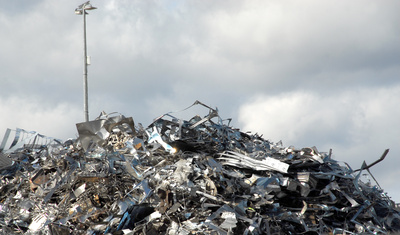Conducted by Barbara Reck, Senior Research Scientist at Yale University, the study ‘Comprehensive Multilevel Cycle of Stainless Steel in 2015’ concluded that on average, 85% of stainless steels are recycled once they reach their end of life, either to become new stainless steels (56%) or a valuable iron source for carbon steels (29%).
The study also considered the recycled content of stainless steels (the amount of scrap used in the production of new stainless steels). Globally, the average recycled content of stainless steel was 44% (32% stainless steel scrap and 12% carbon steel scrap). However, there were significant regional differences, for example, in the USA and Europe recycled content of stainless steels was 71% and 70% respectively. The global figure is strongly impacted by China which, in 2015, produced 52% of the world’s stainless steels but contained on average only 23% recycled content. It is likely that this reflects the fact that the availability of scrap stainless steel in China is lower because most in-use stainless steels have not yet reached their end of life.
The study also analyzed end use sector specific end-of-life flows. Household appliances and electronics and metal goods had the lowest yet high end-of-life collection rate at 80%, while building and infrastructure had an 85% end-of-life collection rate and transportation and industrial machinery accounted for the highest end-of-life collection rate at 90%.
Kai Hasenclever, ISSF Director Economics & Statistics and Long Products, and project leader of this Team Stainless project commented:
“Stainless steels support many essential applications in our modern world from transportation, buildings, bridges and water pipes to medical uses and food preparation. As the focus on sustainability intensifies there is an increasing need to quantifying the material life cycle of stainless steels and their efficiencies from production to fabrication, manufacturing, use, recycling and disposal.
“This latest study into stainless steel stocks and flows cycles confirms its high end-of-life recyclability and, in the majority of regions, its high recycled content. This, coupled with stainless steels’ durability and longevity, clearly demonstrates it credentials as a sustainable material of choice.”








[…] on vast quantities of scrap steel, and a 2015 study found that 85% of stainless steel is already recycled after its first use. There’s little room to increase the percentage of scrap in new steel in Europe, so manufacturing […]
[…] on vast quantities of scrap steel, and a 2015 study found that 85% of stainless steel is already recycled after its first use. There’s little room to increase the percentage of scrap in new steel in Europe, so manufacturing […]
[…] El ciclo de vida general de los aceros inoxidables mensaje encontró que el La tasa de reciclaje global promedio de acero inoxidable fue del 85%. Eso es suspensión, pero el contenido reciclado promedio de puñal inoxidable es del 44%, por lo […]
[…] 2015, The Global Life Cycle of Stainless Steels report found that the average global recycling rate of stainless steel was 85%. While this is high, the average recycled content of stainless steel was 44% – meaning the […]
[…] New study shows life cycle of stainless steels […]
[…] one more thing that will certainly most likely to the land fill at the end of its lifecycle. As a extremely recyclable item, the sink can be made right into one more item. Purchasing stainless-steel is one method to […]